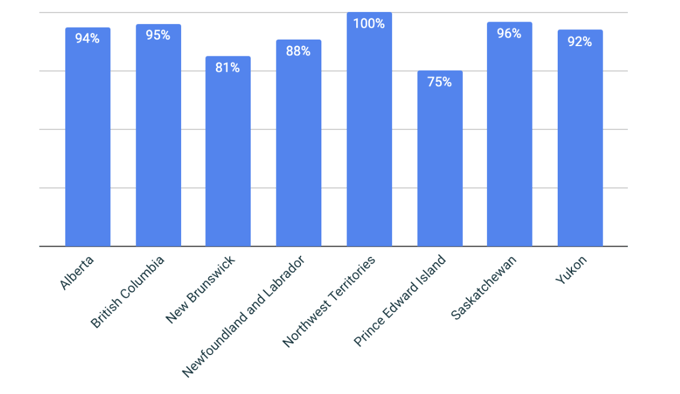On May 4, 2022, provincial and territorial emergency officials conducted tests of Canada’s National Public Alert System (NPAS) known as Alert Ready. Manitoba, Ontario, Quebec, Nunavut and Nova Scotia did not participate. These public test alerts were sent via radio, television, LTE compatible wireless devices, and other third-party emergency alert products such as Alertable.


Most alert Ready distribution channels have a one-way broadcast nature. This means they do not provide a direct way for the public to provide feedback on alerts received. This includes radio, television, and LTE-compatible wireless devices. Therefore, we take the initiative to solicit feedback each time by way of a national survey. We did so again for the May 4, 2022 test, with a specific interest in the effectiveness of the wireless alerting channel.
PEASI created an online survey and asked Canadians to complete it. The survey was widely shared via municipal officials, social media, news organizations, and the Alert Ready website. In total there were 7,128 responses, which is an increase of 33.6% from the last survey. This is mostly because of increased participation from British Columbia, a province that did not participate in the last test.
117 survey responses could not be accurately traced to a particular province or territory. Because of this, these responses were removed from the total number of responses received in calculating some of the statistics presented.
Survey responses came from:
- 90.5% – British Columbia
- 6.2% – Alberta
- 3.3% – All other participating Canadian provinces/territories
Success of the test alert:
- 94.7% report receiving the wireless alert
- 5.3% report not receiving the alert
- 2.2% increase from the last test alert in November 2021.

Success rate by province:
- Alberta-94%
- British Columbia-95%
- New Brunswick-81%
- Newfoundland and Labrador-88%
- Northwest Territories-100%
- Prince Edward Island-75%
- Saskatchewan-96%
- Yukon-92%
One of the survey questions asks:
“if you could improve one thing about emergency alerts, what would it be?” The top 5 responses include:
- Ability to override device settings. This includes volume, vibrate and silence/do not disturb modes.
- Change the sound. Many think it is either too loud or too soft, too long or too short. Several suggest a building up of the sound so that it doesn’t scare you but will get your attention. Another suggestion is to provide a warning with a softer tone a few minutes prior to the test alert.
- Give the ability to opt-out of some or all alerts. Some respondents suggest having tiers of alerts, with the ability to disable tests and less severe alerts.
- Ensure more people receive alerts and advance warning is given out prior to the test alert. Email and landline databases, a downloadable app, air raid sirens, social media and receiving alerts while within apps like YouTube are other methods respondents suggest to receive alerts.
- Make the alert easier to read and understand. The alert information should be more clear and better instructions given. Increased spacing between words, a different background colour, brighter text and simpler language are all suggestions. A link should be provided so people know where to go to get more information, specifically on how to prepare for an actual emergency instead of just sending out a test.
Another observation is that respondents would like to have their phones recognize if they are driving. In this case, to avoid potential accidents, the test alert should not be sent to these devices.
Next to wireless alerts, the most popular distribution methods are third-party mobile apps and television. Radio and social media are also ways that the alert was received. 4.8% report that this was their first alert and 88% report receiving a real alert in the past as well as receiving the most recent test alert.
For those with issues receiving the alert:
- 45% have Android devices
- 53% have Apple devices
- 67.8% report having received a previous alert
- 53% of respondents use Telus as their service provider, 14% use Bell and 20% use Rogers
For those who have devices not compatible with the Alert Ready system, Alertable is a great option to ensure you still receive emergency alerts. Alertable is able to send notifications in more than 15 different ways for increased recipient choice and compatibility with systems like Alert Ready.
To read more about Alert Ready click here
To read the Alert Ready test survey report in its entirety Click Here